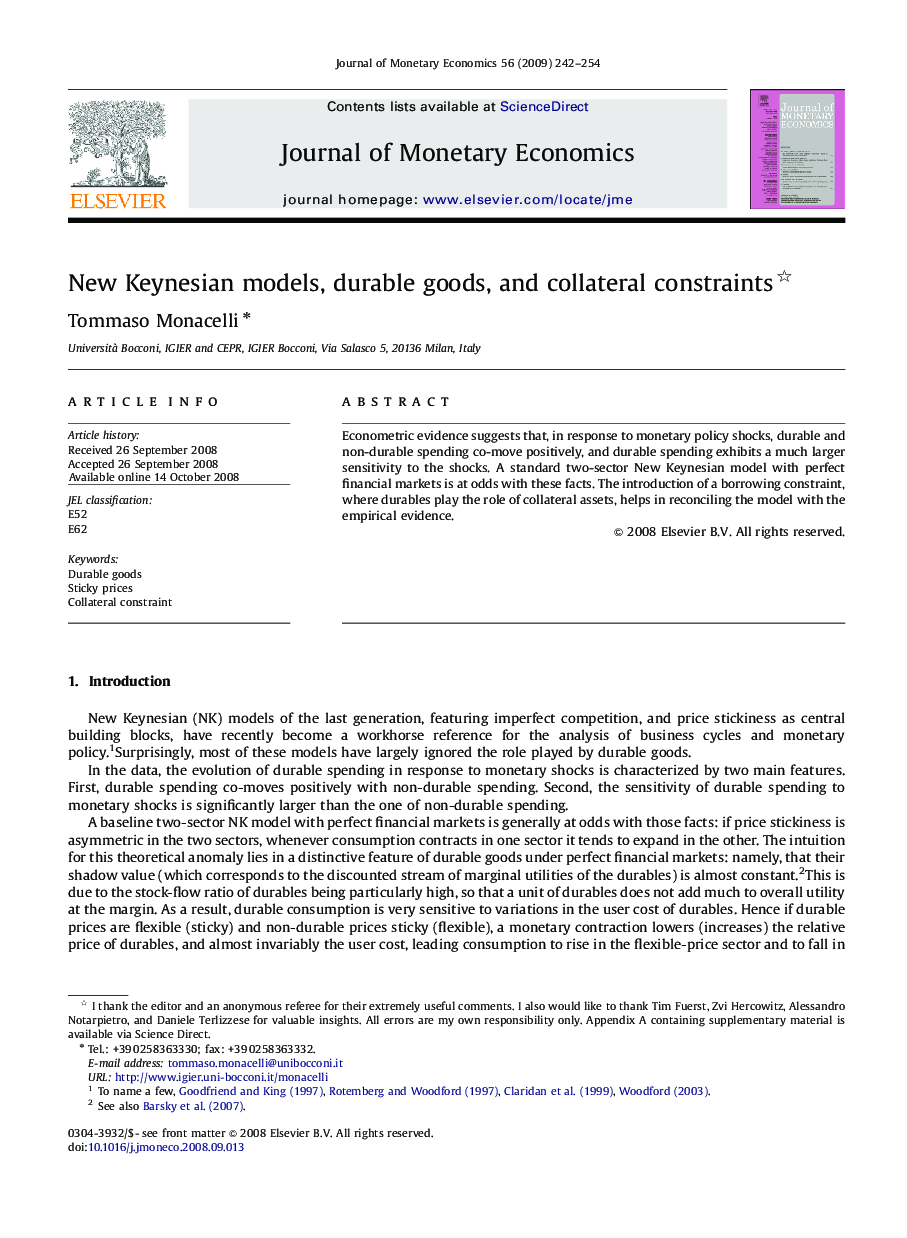| Article ID | Journal | Published Year | Pages | File Type |
|---|---|---|---|---|
| 967147 | Journal of Monetary Economics | 2009 | 13 Pages |
Abstract
Econometric evidence suggests that, in response to monetary policy shocks, durable and non-durable spending co-move positively, and durable spending exhibits a much larger sensitivity to the shocks. A standard two-sector New Keynesian model with perfect financial markets is at odds with these facts. The introduction of a borrowing constraint, where durables play the role of collateral assets, helps in reconciling the model with the empirical evidence.
Related Topics
Social Sciences and Humanities
Economics, Econometrics and Finance
Economics and Econometrics
Authors
Tommaso Monacelli,
